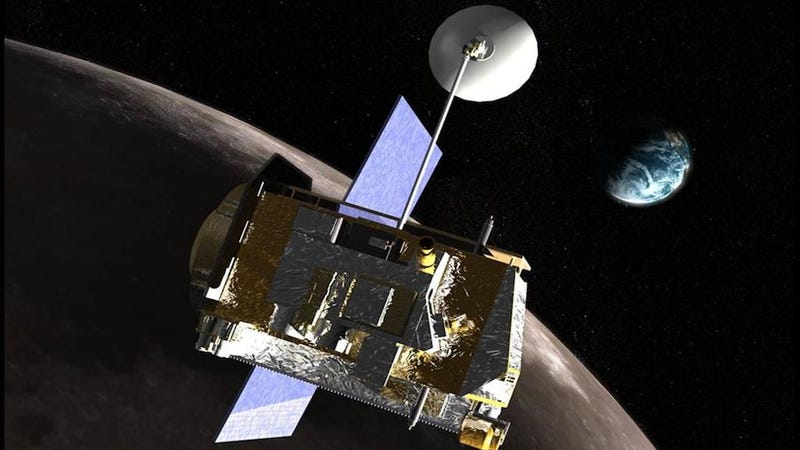
Much like George Clooney in Gravity, sometimes, spacecrafts meet unfortunate fates—they get lost in space, and are almost always victims of the final frontier. But over the last few years, NASA has been having some real success locating wayward spacecrafts, including its STEREO-B solar observer. The agency has now done it again, locating an Indian spacecraft that lost contact with the Earth nearly eight years ago.
Using a ground-based radar technique, scientists at NASA’s Jet Propulsion Laboratory in Pasadena, California were able to locate NASA’s still-active Lunar Reconnaissance Orbiter (LRO), which launched in 2009, as well as the Indian Space Research Organization’s Chandrayaan-1, which blasted off Earth in 2008. The latter, which was much more difficult to find due to its small size (about 5 feet on each side), had been considered lost.
“Finding LRO was relatively easy, as we were working with the mission’s navigators and had precise orbit data where it was located,” Marina Brozovic, a radar scientist at JPL said in a statement. “Finding India’s Chandrayaan-1 required a bit more detective work because the last contact with the spacecraft was in August of 2009.”

First, the team at JPL used orbital estimates to make an educated guess at where Chandrayaan-1 might be, some 124 miles above the Moon and in a polar orbit. Then, NASA sent microwave beams toward the Moon’s north pole using the 230-foot antenna at its Goldstone Deep Space Communications Complex to see if the spacecraft would cross paths with the radar. An object with the radar signature of a small spacecraft did, twice.
Over the next three months, the group listened to the radar “echoes” bounced back by the spacecraft, which were received by NASA’s 330-foot Green Bank Telescope in West Virginia, along with the Arecibo Observatory in Puerto Rico. Because this ground-based method effectively re-discovered the tiny spacecraft, it could be enormously helpful for future lunar missions—even crewed ones.
Chandrayaan-1 was India’s first mission to the Moon. In its 10 months of activity between October 2008 and August 2009, the satellite completed all of its mission objectives, which included chemical and geological mapping. While the ultimate fate of the orbiters remains unknown, we hope it feels a little less alone in the vacuum of space. It’s cold out there.
[NASA]






